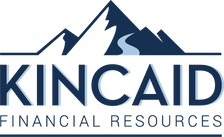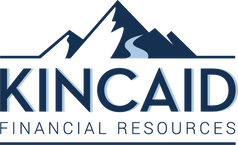|
It’s that time of year again. Time to buy gifts for spouses, children, and all the other friends and family who play a meaningful role in your life. Have you finished your Christmas shopping?
If you’re approaching retirement, you may want to give yourself a gift this year. No, not an expensive gadget or vacation. Rather, use this holiday season to give yourself the gift of a financially stable retirement. The new year will be here before you know it. Take some time now to review your retirement strategy so you can take action and start 2020 on the right foot. Below are a few tips to get you started: Increase your retirement contributions. Do you make retirement contributions to a 401(k), IRA, or another qualified retirement plan? These types of accounts are powerful retirement savings tools because of their tax-deferred status. You don’t pay taxes on growth as long as the funds stay inside the account. That may help your qualified savings compound at a faster rate than they would in a taxable account. Consider increasing your contributions to your 401(k) or IRA in 2020. You can contribute up to $19,500 to a 401(k) in 2020. That number increases to $25,500 if you are age 50 or older. You can also contribute up to $6,000 to an IRA, or up to $7,000 if you are 50 or older.1 Of course, it may not possible for you to increase your contribution to the maximum level without busting your budget. Any increase in contributions is helpful. One effective strategy is to gradually increase your contributions over time. For example, you could set up your 401(k) contribution to increase 1% every year or even every six months. Reduce your exposure to risk. If you’re like many people nearing retirement, you’re not as comfortable with risk as you once were. That’s natural. Many people become more risk-averse as they approach retirement. After all, you don’t have as much time as you once did to recover from a market loss. There are a few steps you can take to reduce your exposure to risk. One is to review your allocation and risk tolerance and make sure they’re aligned. Your risk tolerance is your specific comfort level with market volatility. It’s based on your unique needs, goals, and time horizon. As you get older, your risk tolerance may change, so it’s important that your strategy changes along with it. You could shift your strategy to more conservative assets that have less exposure to risk and volatility. You could also utilize financial vehicles that offer growth potential without the chance of downside loss. A financial professional can help you identify strategies that can reduce your risk exposure. Guarantee* your retirement income. Are you approaching retirement? If so, this may be the time to start thinking about your retirement income. You’ll likely receive income from Social Security. Maybe you’ll even receive a defined benefit pension. However, you also may need to take distributions from your 401(k), IRA, or other retirement savings. Often those withdrawals aren’t guaranteed. A market downturn could limit your ability to take retirement income. Or if you withdraw too much in the early years of retirement, you may not have assets left in the later years. Fortunately, you minimize these risks by creating guaranteed* income from your retirement savings. There is a wide range of retirement vehicles available that you can use to convert a portion of your retirement savings into income that is guaranteed* for life, regardless of what happens in the market or how long you live. Ready to give yourself the gift of financial stability? Let’s talk about it. Contact us today at Kincaid Financial Resources. We can help you implement a strategy. Let’s connect soon and start the conversation. You can reach us here. 1https://www.irs.gov/newsroom/401k-contribution-limit-increases-to-19500-for-2020-catch-up-limit-rises-to-6500 *Guarantees provided by annuities, including optional benefits, are backed by the claims-paying ability of the issuer, and may contain limitations, including surrender charges, which may affect policy values This information is designed to provide a general overview with regard to the subject matter covered and is not state specific. The authors, publisher and host are not providing legal, accounting or specific advice for your situation. By providing your information, you give consent to be contacted about investments and potential insurance products as deemed appropriate by a licensed fiduciary. This information has been provided by a Licensed Insurance Professional and does not necessarily represent the views of the presenting insurance professional. The statements and opinions expressed are those of the author and are subject to change at any time. All information is believed to be from reliable sources; however, presenting insurance professional makes no representation as to its completeness or accuracy. This material has been prepared for informational and educational purposes only. It is not intended to provide, and should not be relied upon for, accounting, legal, tax or investment advice. This information has been provided by a Registered Investment Advisor and Licensed Insurance Professional and is not sponsored or endorsed by the Social Security Administration or any government agency. Advisory services offered through ChangePath, LLC, a Registered Investment Adviser with the SEC. ChangePath, LLC and Kincaid Financial Resources are unaffiliated entities. 19524 - 2019/12/3
0 Comments
Leave a Reply. |
Categories
All
Archives
February 2021
|
Advisory Services offered through CreativeOne Wealth, LLC a Registered Investment Adviser. CreativeOne Wealth, LLC and Kincaid Financial Resources are unaffiliated entities.
Licensed Insurance Professional. We are an independent financial services firm helping individuals create retirement strategies using a variety of investment and insurance products to custom suit their needs and objectives. Investing involves risk, including the loss of principal. No Investment strategy can guarantee a profit or protect against loss in a period of declining values. Any references to protection or lifetime income refer to fixed insurance products, never securities or investment products. Insurance and annuity products are backed by the financial strength and claims-paying ability of the issuing insurance company.
The information is not intended to be investment, legal or tax advice. The agent can provide information, but not advice related to social security benefits. The agent may be able to identify potential retirement income gaps and may introduce insurance products, such as an annuity, as a potential solution. For more information, contact the Social Security Administration office, or visit www.ssa.gov.
Licensed Insurance Professional. We are an independent financial services firm helping individuals create retirement strategies using a variety of investment and insurance products to custom suit their needs and objectives. Investing involves risk, including the loss of principal. No Investment strategy can guarantee a profit or protect against loss in a period of declining values. Any references to protection or lifetime income refer to fixed insurance products, never securities or investment products. Insurance and annuity products are backed by the financial strength and claims-paying ability of the issuing insurance company.
The information is not intended to be investment, legal or tax advice. The agent can provide information, but not advice related to social security benefits. The agent may be able to identify potential retirement income gaps and may introduce insurance products, such as an annuity, as a potential solution. For more information, contact the Social Security Administration office, or visit www.ssa.gov.


 RSS Feed
RSS Feed
